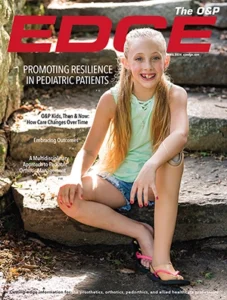A novel gene that animal and human studies have implicated in the genetics of neuropathic pain-which could also prove to be promising for amputees who experience phantom pain-has been identified and validated by Israeli researchers. Their study was presented during the 12th International Congress of Human Genetics and the 61st American Society of Human Genetics Annual Meeting October 12, in Montreal, Quebec, Canada.
Jonathan Nissenbaum, PhD, from Hebrew University, Jerusalem, Israel, and colleagues used an integrative whole-genome-based approach to narrow down several hundred potential candidate genes, without an a priori assumption of the identity of the gene, to a single gene, the CACNG2 gene, that is implicated in pain behaviors in mice. The CACNG2 gene is a calcium-channel, voltage-dependent gamma subunit 2 that encodes for a protein known as “stargazin.”
In an interview with Medscape Medical News, Dr. Nissenbaum said it was “interesting” to investigate pain from a genetic perspective and to provide a physiologic basis for which amputees are predisposed to develop phantom limb pain.
“These patients complain about terrible pain and, even from a philosophical point of view, it’s difficult to accept that an organ that…does not exist produces pain, and that these patients are suffering,” he said. These findings could “legitimize” phantom limb pain by identifying a gene that makes individuals susceptible to that pain, he said.
Ultimately, the hope is that a new neuropathic pain treatment will emerge based on the biology of the implicated gene and the protein it encodes. Session moderator Inna Belfer, MD, PhD, associate professor of anesthesiology and human genetics at the University of Pittsburg (Pitt), Pennsylvania, told Medscape Medical News that the Israeli research was “promising,” in that they had “multiple lines of evidence leading to the gene.”
The research was also conducted on animals and humans, so the gene is a good target, she added. “What we are trying to do with our genetic studies is identify those at risk of developing neuropathic pain; for example, to identify new molecules and new pathways that are involved in a certain condition, such as neuropathic pain, and to prioritize those targets and pathways so we can narrow our focus down to a specific pathway. Once we have the gene, we can move on to the biology of the gene, and from there to regimens that modulate the function of the biology and correct the problem.”
In a subsequent cohort of 549 post-mastectomy patients with phantom breast pain identified by researchers in Toronto, Ontario, Canada, the same gene was identified and correlated to the genotype and the phenotype of each patient.
This correlation was based on selected single-nucleotide polymorphisms (SNPs) covering the regulatory and coding regions of the human CACNG2 gene, which were compared in DNA samples from women with and without post-mastectomy neuropathic pain.
On association analyses, “we found 3 SNP haplotypes that were associated with the tendency to develop neuropathic pain. Since it was marginally significant, further verification with a much larger cohort is needed,” Dr. Nissenbaum observed.
The researchers used a combination of methodologies to reduce the number of genes to a “manageable list” of about 10 or fewer, all of which could be relatively easily assessed for their potential properties.
“According to the criteria we set, we found only one gene that met all of our criteria,” Dr. Nissenbaum said, though it took many steps and more than a few years to identify.
Researchers are still presently making assumptions about the gene based on what they know about the protein encoded by CACNG2. For example, they know that the gene encodes for a neurologic protein known as stargazin, which is associated with recurrent epileptic seizures, ataxia, and neuropathic pain in mice.
“We know that most, if not all, good neuropathic pain drugs were developed or function as anticonvulsant drugs, so we have a link between these two entities (i.e., neuropathic pain and epilepsy),” Dr. Nissenbaum said.
Stargazin is exclusively expressed in the peripheral and the central nervous system; there is no evidence from the literature suggesting that it is expressed in any other tissue. The protein also has two major functions that might be relevant to pain-it is a voltage-sensitive calcium-channel subunit and it is involved in trafficking AMPA receptors (receptors for glutamate) to neuronal membranes.
“Both functions affect neuronal excitability, hence, they are relevant to pain,” Dr. Nissenbaum noted.




